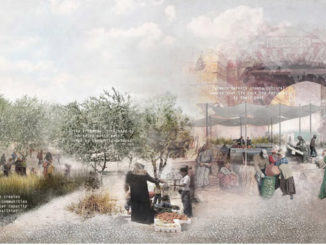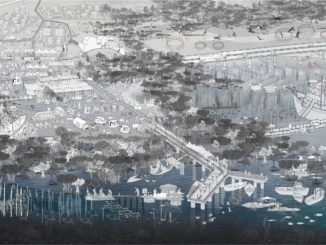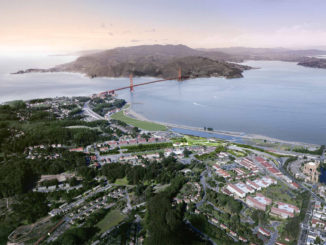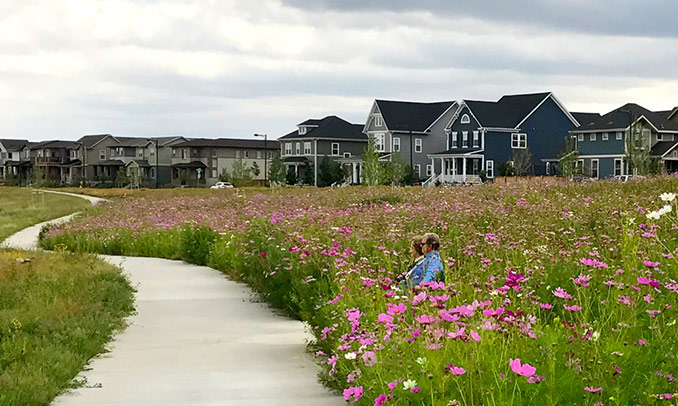
With the catastrophic storm flooding in Houston and Florida again sounding the alarm about development patterns and ever-expanding impermeable urban surfaces in cities across the U.S., the sustainable design strategies for one Denver neighborhood stand out. Denver-based urban design and landscape architecture firm Civitas has been instrumental in the design of Stapleton, a 4000-acre mixed-use brownfield redevelopment on the former Stapleton Airport site, since the community’s inception in 1988, particularly in the articulation of its beloved parks and greenways. Now as final developable acreage in Stapleton is being graded for construction, most of the parks system has opened, even as the North Stapleton Open Space Plan for the newest neighborhoods north of I-70 has won Civitas an ASLA Colorado merit award. A final centerpiece of the plan—Prairie Meadows Park—is scheduled to open spring of 2018.
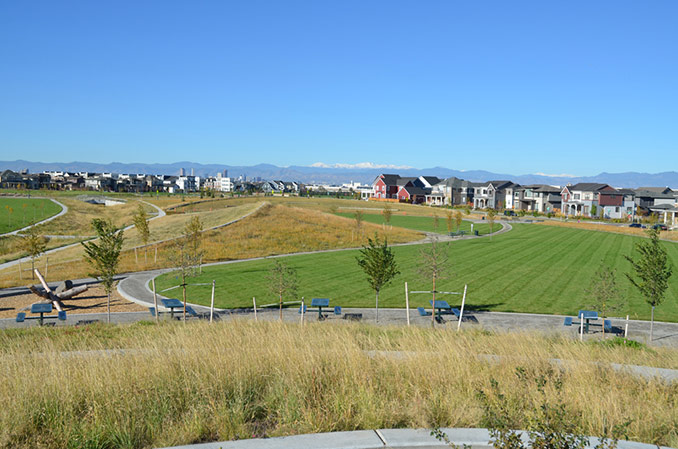
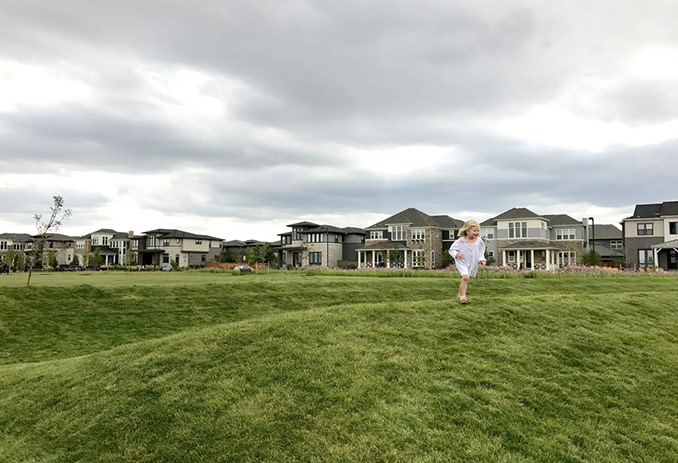
With the double function as green space and drainage ways, “Stapleton Parks were designed to handle major storm events,” says Scott Jordan, Civitas principal and design lead for Stapleton’s open spaces. At a recent community meeting, a resident observed, “The system is working. When we’ve had heavy rains, our homes didn’t flood,” adding an emphatic “thank you.” And between storms, the creative drainage solutions provide myriad active outdoor uses, including a kid-friendly creek bed in Prairie Meadows Park.
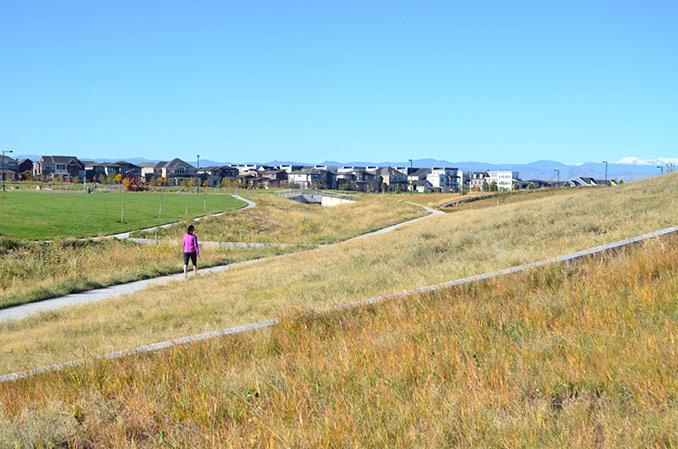
With over 250 acres of recently opened parks and open spaces between I-70 and 56th Avenue, Civitas has taken the relatively flat site and created a series of strategic and sculptural landforms that naturally convey storm water in lieu of piping it underground. “By using a natural and visible system of water conveyance, residents are offered an array of interactive experiences to better appreciate the role of water in the prairie landscape,” explains Jordan.
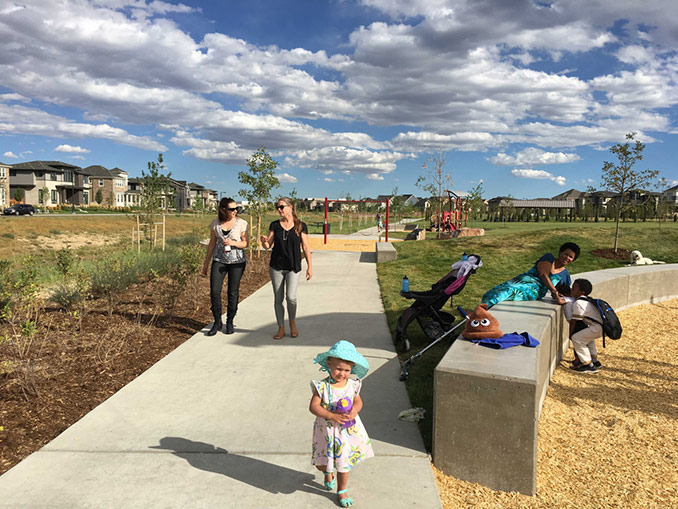
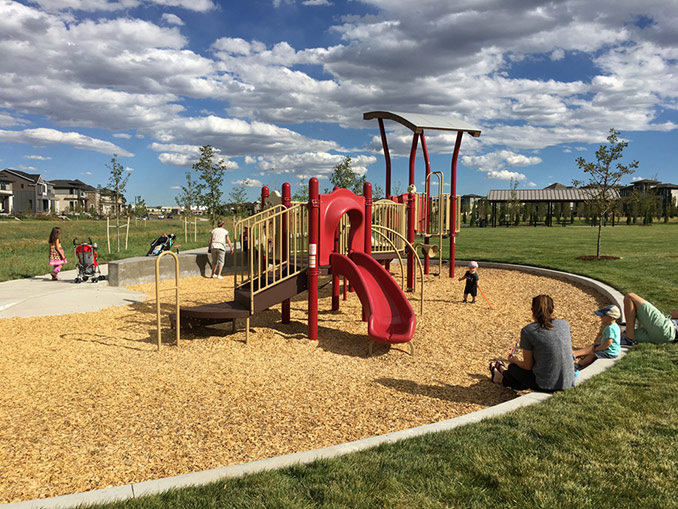
Further inverting the traditional people-first pattern of residential development, Civitas designed an integrated prairie-like landscape that restores pre-airport Front Range ecosystems through a series of interconnected, yet diverse, open spaces that provide residents an increasingly natural experience of the landscape. “The system was designed as a network of loops to put the parks in motion and enhance potential social interactions,” says Jordan.
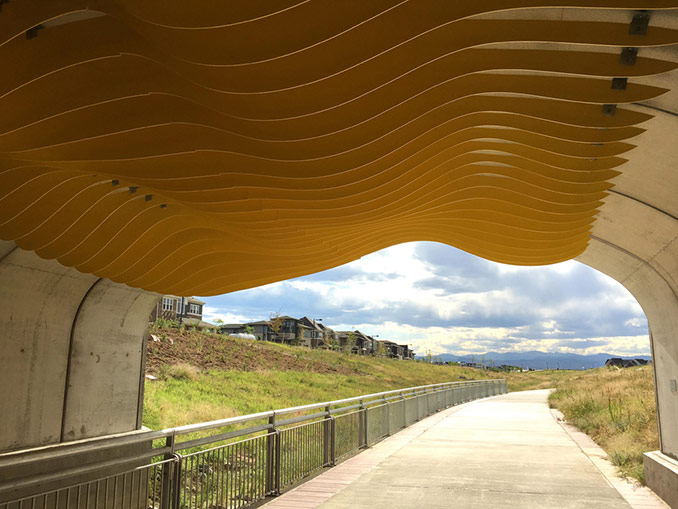
On the plantings level, Civitas worked with national firm Great Ecology to calibrate seed mixes and plant species selections for each micro-climate and micro-topography – “not only creating experiences for humans, but also optimal growing conditions for plants to thrive,” according to Jordan. This intertwined approach to living in the landscape will be further enhanced as development pushes northeast toward the Rocky Mountain Arsenal – establishing long-term sustainability and reducing consumption of one of the West’s most valued natural resources; water.
Known for delving into the history of a place to inform its future, Civitas looked to the original wetlands and sand dunes that comprised the indigenous Sandhills Prairie ecosystem long before jets and runways crisscrossed the former Stapleton Airport. By creating water conveyance paths throughout the area, natural water filtration systems are re-established while feeding the landscape and nurturing habitat corridors for birds and other species.
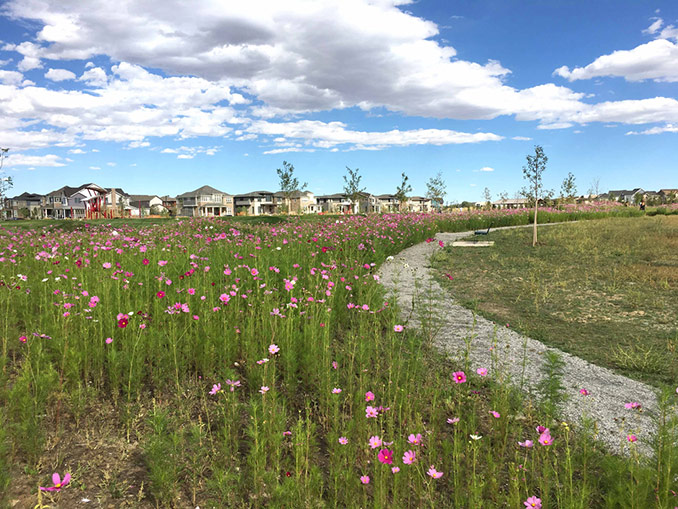
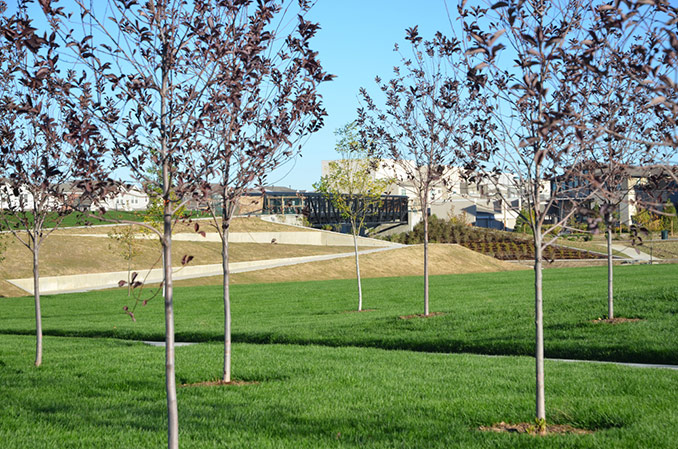
Once completed, the 470-acre Stapleton open space system north of I-70 will introduce the most expansive native prairie grass landscape system within the Denver Parks network. And once established, the plants will no longer require irrigation, effectively reducing the project’s overall water needs by 70 percent.
Founded in 1984 with the core purpose of “creating healthier cities,” Denver-based Civitas, Inc., is an idea-based practice of urban designers, architects and landscape architects engaged in strategic planning for urban change and project design for built works. A consultancy and a design studio, Civitas advises on a wide range of strategies for re-imagining urban life and places, working in U.S. cities coast to coast and around the world.

